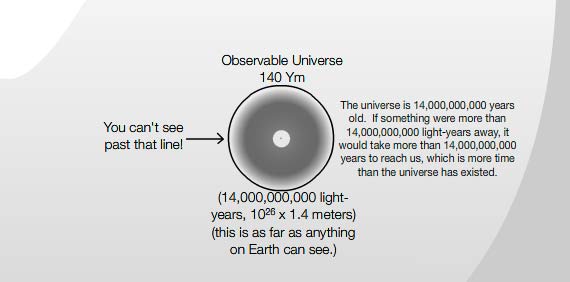But yo, nothin’ definite

Circular patterns within the cosmic microwave background suggest that space and time did not come into being at the Big Bang but that our universe in fact continually cycles through a series of “aeons.” That is the sensational claim being made by University of Oxford theoretical physicist Roger Penrose, who says that data collected by NASA’s WMAP satellite support his idea of “conformal cyclic cosmology”. This claim is bound to prove controversial, however, because it opposes the widely accepted inflationary model of cosmology.
According to inflationary theory, the universe started from a point of infinite density known as the Big Bang about 13.7 billion years ago, expanded extremely rapidly for a fraction of a second and has continued to expand much more slowly ever since, during which time stars, planets and ultimately humans have emerged. That expansion is now believed to be accelerating and is expected to result in a cold, uniform, featureless universe.
Penrose, however, takes issue with the inflationary picture and in particular believes it cannot account for the very low entropy state in which the universe was believed to have been born – an extremely high degree of order that made complex matter possible. He does not believe that space and time came into existence at the moment of the Big Bang but that the Big Bang was in fact just one in a series of many, with each big bang marking the start of a new “aeon” in the history of the universe.
photo { Young Kyu Yoo }
related:




